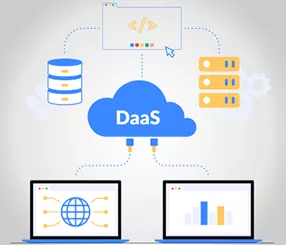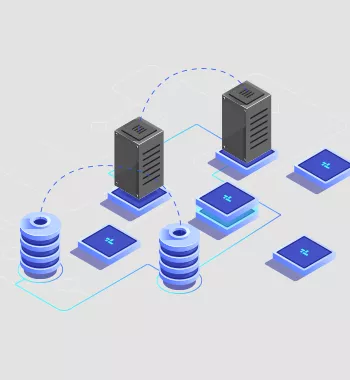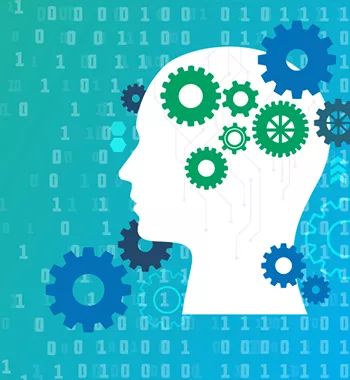Data Is the Lifeblood of Successful Organizations

To sustain your competitive edge, you need to capitalize on the torrent of structured/unstructured, IoT and raw data crossing your borders daily. A data ecosystem that efficiently aggregates and collates data from digital sources, as well as historical systems and data stores, is essential to deriving insights from today’s advanced analytics.
Xoriant defines the modern data ecosystem as a collection of data assets comprising Data Infrastructure, Data Analytics and Data Visualization. Together, they should render the right insights in the right visual format to achieve your business goals.
Key Service Areas
Actions Data Assets
To ensure you apply the latest insights to your corporate action projects, Xoriant analysts will access our massive database of legal entity and hierarchy/corporate Actions Data. With 14+ million entities spanning 250+ countries, and up to 95+ attributes per legal entity record, you can trust the results.
Management Services
Your company invests precious time and resources to avoid non-compliance, hefty fines, and damage to your brand. By combining your data platform with our management services, you gain a unified data source to help improve operatorial efficiency, regulatory compliance, risk management, and client onboarding.
Consulting
A comprehensive governance program allows you to quickly identify gaps, employ robust issue management and reporting processes; and leverage a data remediation plan that estimates time, costs, and probable results. Our data experts will customize your governance program based on the DCAM framework.
Solutions
For both buy- and sell-side firms that require a ready-to-use data aggregation and remediation solution, we recommend Xoriant CDi's Data Management Platform for enabling greater flexibility, agility, and efficiency within your data aggregation and remediation processes.
Explore Xoriant Big Data And Analytics Offerings
Migration and Consolidation
To fully leverage the benefits of data across your enterprise, you need to move and restructure data and systems without impacting productivity. Xoriant experts will help you upgrade legacy platforms, migrate to new platforms and clouds, while ensuring consistent data access and minimal disruption.
Actions Data Assets
To ensure you apply the latest insights to your corporate action projects, Xoriant analysts will access our massive database of legal entity and hierarchy/corporate Actions Data. With 14+ million entities spanning 250+ countries, and up to 95+ attributes per legal entity record, you can trust the results.
Management Services
Your company invests precious time and resources to avoid non-compliance, hefty fines, and damage to your brand. By combining your data platform with our management services, you gain a unified data source to help improve operatorial efficiency, regulatory compliance, risk management, and client onboarding.
Consulting
A comprehensive governance program allows you to quickly identify gaps, employ robust issue management and reporting processes; and leverage a data remediation plan that estimates time, costs, and probable results. Our data experts will customize your governance program based on the DCAM framework.
Solutions
For both buy- and sell-side firms that require a ready-to-use data aggregation and remediation solution, we recommend Xoriant CDi's Data Management Platform for enabling greater flexibility, agility, and efficiency within your data aggregation and remediation processes.
Explore Xoriant Big Data And Analytics Offerings
Migration and Consolidation
To fully leverage the benefits of data across your enterprise, you need to move and restructure data and systems without impacting productivity. Xoriant experts will help you upgrade legacy platforms, migrate to new platforms and clouds, while ensuring consistent data access and minimal disruption.
Connect With Us to Learn More
Protecting Data With AI

Gartner predicts that through 2022, data management tasks will be reduced by 45%. If augmentation in BI and analytics is any indication, this could lead to the development of a major new enterprise software category in data management.
With the use of AI, an IT team can protect a database with ease.
Regulatory Compliance

On the heels of GDPR and the newly-enacted California Consumer Privacy Act, data governance will be an increasingly regulated (and important) aspect of data management. These compliance mandates are just the beginning, as an increasing number of nations and US states consider their data privacy frameworks.
GDPR and CCPA will disrupt traditional marketing and data handling methods.
Multi-Cloud Data Management

Hybrid and multi-cloud data management will soon become the new norm, with master data management proving to be the most adaptable to the cloud right now. This investment in cloud data management technologies will extend to SaaS offerings as well, namely data and DaaS products.
Data-as-a-Service will generate revenue for large organizations.
Graphic Databases

Graph databases are a type of NoSQL database, created to address relational database limitations. They prioritize the relationships between data, so querying is fast because they are perpetually stored in the database. These relationships can then be visualized, making them user-friendly for heavily inter-connected data.
Get a view of simple, complex relationships between unrelated data.
Connect With Us to Learn More
Trends Title
Explore Industry Trends and Insights
Explore Industry Trends and Insights


